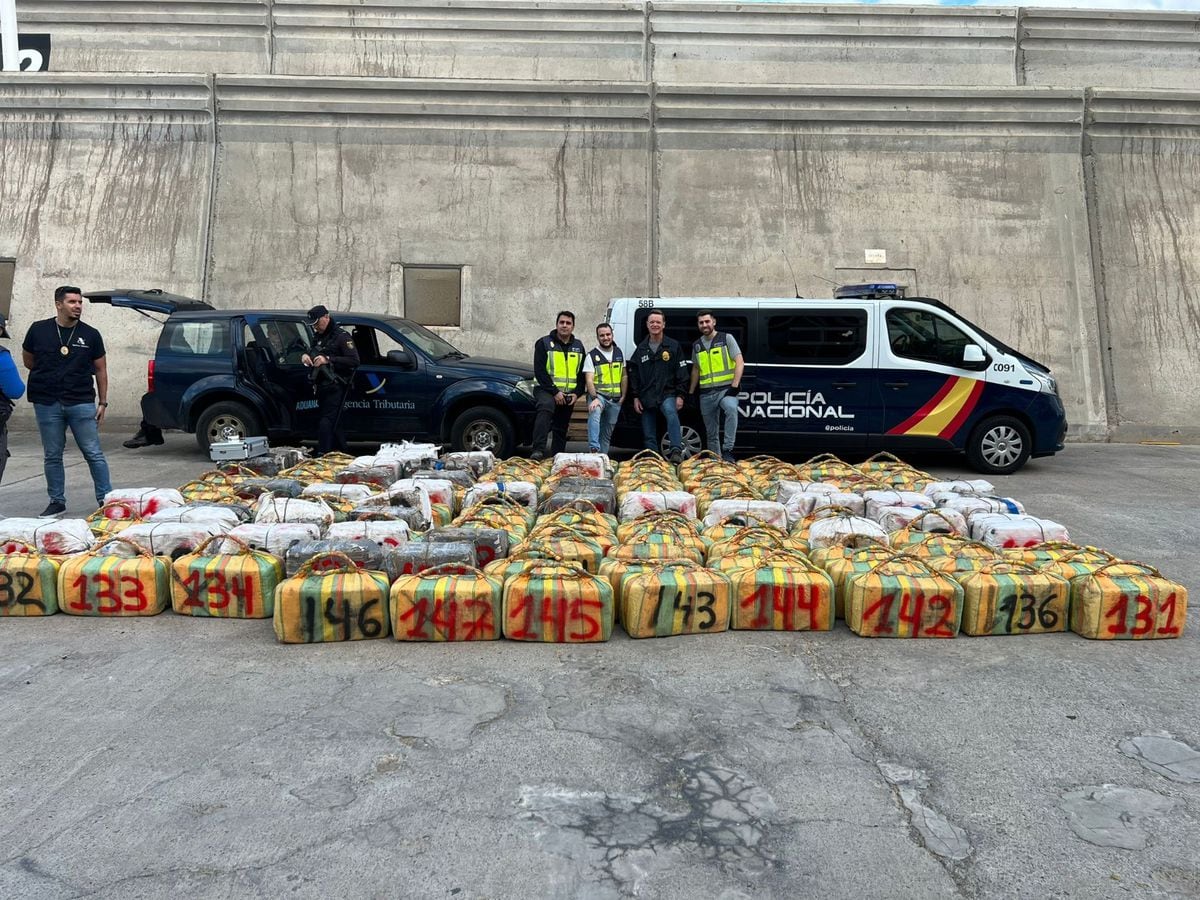It has been known as the case of the narcovacas and it is, along with drug submarines and the chemical masking of cocaine or the narcopian of another era, one of the most striking forms of camouflage for the shipment of drugs abroad that has been recently known in Colombia.
However, despite the fact that the 1,700 cows are at the center of the discussion and the victims of the scandal -they were almost slaughtered-, the 4.5 tons of cocaine seized were camouflaged in the cattle feed containers and not inside animals, as has been said on social networks.
The history of this shipment reveals, for the Colombian authorities, a method of loading and unloading the drug on the high seas;
and for the Spanish, the way in which "criminal organizations break down when transporting drugs from Latin America to Spain using live cattle to make it difficult to control and locate them."
According to the Colombian Navy, this shipment was known about since the first days of January, almost a month before the ship with the drugs was detained in the Canary Islands, in Spain.
At the beginning of the year, the maritime authorities received information about a possible ship with cattle that would leave Cartagena loaded with drugs to Lebanon and carried out a surveillance process.
"We activated software that allows us to profile ships that may be subject to contamination," says Vice Admiral Hernando Mattos Dager in conversation with EL PAÍS.
The discovery of 4.5 tons of drugs shows that drug traffickers use a method of transferring drugs on the high seas. BORJA SUAREZ (REUTERS)
According to Mattos, the ship sailed with the cows and without the drugs.
“We were able to verify that the contamination did not occur in Colombia,” he affirms.
He explains that they generated the alert to the countries on the route that it could be raised on the high seas or in a port where it made a stop.
Cocaine, says the vice admiral, was introduced into the Antilles, although he does not specify which one.
According to Frontera Vacana, the company that owns the cattle, it would have been in Barbados.
The Colombian authorities affirm that they alerted maritime units from several countries to see which one could be near the vessel and verify the cache.
They also suspected that, just as the ship was contaminated on the high seas, the drug could be unloaded in waters near Ceuta.
The Spanish navy was the closest and intercepted the ship in international waters.
"In the common areas of the ship, a feed silo was found with the presence of an undetermined number of bales of those commonly used for cocaine trafficking," explained the National Police and the Spanish Customs Surveillance Service.
They arrested 28 people of different nationalities right there: ten Tanzanians, five Syrians, four Kenyans, two Ecuadorians, two Panamanians, two Colombians, one Dominican, one Nepali and one Nicaraguan, and they drove the cargo ship Orion V to the port of Las Palmas.
The ship, like others recently arrested in Spain with cocaine, was flagged as Togo.
A ship with history
Since 2020, the National Police and the Spanish Customs Surveillance Service have been on the trail of that vessel.
They considered it “suspected of being used to transport large amounts of drugs.
The drug was loaded in port, or transferred to them on the high seas.
At that time, her name was Spiridon and she was searched as part of an investigation against the clan of the "Hermanos Sanctorum".
Although on that occasion the police found no traces of drugs, the boat was recorded as one that "transported drugs with the excuse of transporting cattle" to Libya, Angola, Saudi Arabia, Curaçao, Egypt, the United Arab Emirates, Hong Kong, Iraq, Israel, Jordan, Lebanon, Libya, Macao, Kuwait and Qatar.
The Spanish Police have called this the 'Atlantic Route' of cocaine because the drug is transshipped in the middle of the ocean to avoid port controls.
Just a week before the Orion V was confiscated, the freighter Blume had been captured, with similar characteristics.
Between the two they have found 9 tons of drugs.
Colombia continues to be the world's largest producer of cocaine and drug traffickers manage to get it out in the most unexpected ways.
According to the Colombian Navy, drug traffickers also use the islands as storage locations.
“They may have been taking out 100, 200 kilos in speedboats from the Caribbean coasts or using neighboring countries.
And once they collect them, they coordinate the point where they are transferred into the sea”, explains Mattos.
The National Police and the Customs Surveillance Service of Spain were on the trail of that vessel. BORJA SUAREZ (REUTERS)
The case has also generated political reactions.
José Félix Lafaurie, the president of the National Federation of Cattlemen, Fedegan, has said that the cattle sector cannot be stigmatized.
“A warning to the country: Colombia is full of cocaine.
Here all export sectors are at risk, ”he said.
In recent years, drugs have been found in the most unusual products.
In peppers, bananas, plastic lemons and even in pieces of tanned leather or tubes in cans of vegetable oil, cocaine has been found.
These are loads that, according to the police, are contaminated by front companies, during their transport, in storage or review yards, in pre-shipment or inside motor ships.
In the case of Orion V, it is still not clear to which drug cartel the cocaine belonged, but it is known that it had at least two types of markings: on some there was a figure of a dragon and on others, the initials LV.
It is also known that, although the 1,750 cows were about to be slaughtered, they were able to continue their journey in another boat to Lebanon.
Subscribe here
to the EL PAÍS newsletter on Colombia and receive all the latest information on the country.

